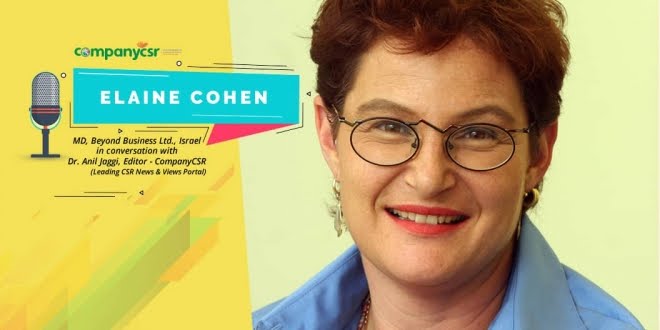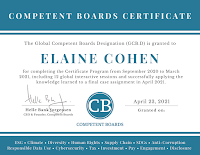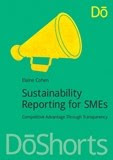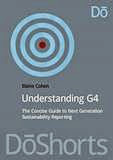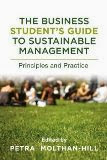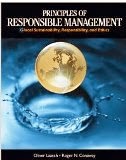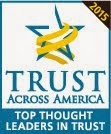With zero shopping days left before Christmas, the time is here once again to preview Santa's Sustainability Report. Reporting is a long Santa tradition. Check out Santa's prior reports:
Santa Claus Inc. 2016 Material Topics Report
🎅 Leadership Message 🎅
Dear Stakeholders
Oh, what a year 2016 has been. Ups and downs, downs and ups. Fortunately, profits have been up for the 346th successive year although almost everything else has been down. That includes Santa’s mood in the wake of startling turns of events in the political arena, mentioning no names Trump Brexit, corporate fraud mentioning no names Wells Fargo, devastating natural disasters in different corners of the globe, the spread of extremism and violence, the grim fate of populations under siege and civil war, increasing racism, sexism and terrorism and the rapidly deteriorating level of biodiversity on the planet which is destroying my reindeer population and favorite dodo egg breakfasts.
Nevertheless, Santa is never down for long, as my mission to spread joy, goodwill and gifts throughout the holiday season is powerful enough to spur me on. In fact, my mission has such a motivating effect on me, taking away all the pain that I feel for the world’s gentle people, that I decided to recreate it in tablet form and market it as acetaminophen and hydrocodone which some of you might know as Vicodin. We call it SantaUpper. So far, we have sold several million units of SantaUpper and have noticed an interesting development. As people begin to feel greater joy and goodwill, they have become more generous of spirit and in cash. Donations to the Santa Claus Goodwill Fund have tripled and are on the way to achieving record levels by the New Year. You can help, whether or not you have ingested our SantaUppers. Send loads of money NOW to the Santa Goodwill Fund.
Aside from this, we have received reports that some people are using far more SantaUppers than the stated dose. We understand that this drug is a little addictive. However, overdosing has given rise to another positive commercial opportunity for people and planet. The SantaUpperDowner. For those who have become critically addicted to SantaUppers, a few swigs of SantaUpperDowner (kale juice flavored with licorice, ginger and reindeer droppings) will soon bring the pain back. Sales are a little sluggish, mainly as we have not been able to maintain a steady supply of reindeer droppings because most them are used in biogas conversion to fuel Santa’s hybrid sleigh – our eco-friendly contribution to Goal 13 - so we are increasing the level of soluble fiber in our reindeer diet and expect to triple production in 2017. Reindeer are now enjoying dried figs and baked yams 3 times a day, in addition to their regular diet of Arctic char.
Santa’s Materiality Matrix
This year, we decided to refresh our Materiality Matrix to define the issues that matter most to our business and to our stakeholders. We consulted with many stakeholders including our teams of elves and reindeer, children around the world, parents, toy suppliers, sleigh manufacturers and sustainability experts. We asked all of these groups to suggest the issues that are of greatest importance to them and which affect their decisions about Santa Claus Inc. and rank them in order of priority. The results were not entirely surprising – especially after we massaged them a little to deliver the result we wanted. Here is Santa’s materiality matrix for 2016:
New Hallmark Movie Series
For years now, we have been standing idly by as Hallmark dominates the Holiday Season with Santa movies without paying any royalties to yours truly. Although the movies are often well made and star my fave performers such as Lori Loughlin, the fact remains that the holiday season belongs to Santa, not to Hallmark. However, generous as ever, we have now formed an agreement with Hallmark to produce a new Santa series that will replace Hallmark's 2016 Christmas line-up. Watch out on your big and little screens for the following New Movies:
• Santa and the Science-Based Goals
• Santa Brings Every Child an Eco-toy for Christmas
• Love at the Christmas Compost Party
• Santa Makes an SDG Wish for Christmas
• The Sustainable Mistletoe Promise
• My Christmas Citizenship Dream
• A Perfect Positive Impact Christmas
• A Heavenly Christmas Engaging Stakeholders
• Santa and the Sustainability Reporting Mystery
All of these full-length movies feature Santa in the starring role and they are guaranteed to bring a tear to your eye this holiday season. Lori Loughlin, Hallmark’s most proliferous and talented actress, also features in each of these movies, because she is Santa’s favorite. And she always solves the Garage Sale Mysteries which is an advantage in case there is any foul play on the set. Do let us know if you have enjoyed a Santa Hallmark movie this season. We are already working on sequels to all the above.
New Santa Reality Series
Santa never ceases to be amazed at the growth in popularity of reality TV and the interest that viewers have in following the personal lives of so many individuals for no particular reason. But, if the Kardashians can do it, if Mariah Carey can do it and heck, if the Amish can do it, then so can Santa. Apparently, reality TV reflects the thirst that the general population has for transparency. Santa believes that transparency could reinforce the trust and love that people everywhere have for Santa. Starting in 2017, a brand-new series of Santa Reality will air on prime time every day for a full year. In preparation for the show, we have kitted out our entire elf and reindeer population with personal microphones and we installed cameras throughout the North Pole. In order to achieve full transparency, we decided to hold nothing back. For some viewers, this may be a disturbing experience. Especially the parts where Santa is in the bathroom after the regular Wednesday breakfast curry, and one episode where overweight elves get stuck in a narrow chimney as they were preparing to help Santa deliver toys on Christmas Eve. Unfortunately, the only way to resolve this situation was to demolish the chimney or dismember the elves. We chose the latter because the chimney was Trump Tower chimney and therefore very high profile. After a gruesome episode in which we cut up several elves and shipped the parts to cannibals in Fiji, we subcontracted the Trump Tower toy delivery to Alex Baldwin who successfully navigated the chimney and was filmed doing so on Saturday Night Live.
Santa on Mars
A new venture we have undertaken in the past year is the fulfilment of our promise to bring toys to all the children of Mars, even if we still don’t know where they are. We believe that populating Mars is the solution to a sustainable planet Earth as the likelihood of achieving the recommendations of the IPCC sometime before we all reach the age of 243 is seriously close to zero. Therefore, we have accelerated our plans to support this initiative by being inclusive and spreading our joy and goodwill to territories unknown.
Getting to Mars has been a bit of a problem, as our reindeer cannot survive in Mars’s atmosphere and we didn’t have enough oxygen tanks to support our team of elves. Therefore, instead of the sleigh, we chartered a Virgin Galactic satellite, specially customized for our elf population, and we kitted out a compact team of elves with Mars survival kits, including several cans of Red Bull in case they suffer a bout of low blood sugar. In our first trial mission, we deposited several toys for children of all sexes and ages in craters around the planet. We also left a few iPhone 7’s just in case they are Mars-proof as well as waterproof, so that the kids could give us a call if they wanted to replace any toys. To our delight, we received several calls from satisfied kids on Mars. We also received several complaints about the iPhone 7’s. Apparently, the battery life on Mars is even poorer than it is on Earth, and it’s impossible to use the earphones that were “in the box” while the iPhone is on constant charge. We addressed this by shipping out a batch of recalled Samsung Galaxy Note 7’s, but they all exploded before they could reach their galactic destination.
Toy Developments
As we do every year, we have continued to expand our range of toys and in 2016, we decided to focus on toys that support SDG 5 – gender equality – with a breakthrough innovation: A woman Santa. Yes, this is the first ever gender-balanced Santa doll in the history of Santakind. Santa Woman comes in 5 different editions, empowering women everywhere.
• Santa Woman Housewife: Special edition of a doll that can cook, clean, shop, raise children, make the beds, run errands, look after elderly parents, perform conjugal duties, and even make home-made ice cream. She needs very little care and attention and never gets worn out. This Santa Woman is most popular with boys.
• Santa Woman Executive: We only make around 5% of Santa Women Executives, representing the penetration of women in leading roles in business today. This edition is first in the office every day and last to leave, wears suit and a tie, goes for drinks after work and beats all the Santa Men Executives at almost every project. The good news is that Santa Woman Executives come at about 60% of the price of Santa Men Executives and they never need to be promoted.
• Santa Woman Miss World: This edition of Santa Woman is everyone’s favorite. Her mission is to achieve world peace and she loves animals. She looks as good in a bikini as in an evening dress, or even jeans. She has long shiny hair and doesn’t say very much other than how wonderful it would be to achieve world peace. She didn’t even speak out when unwelcome visitors stopped by the dressing room.
• Santa Disabled Woman: We took our cue from Lego on this one. This edition comes in several versions: one in a wheelchair, one with crutches, one with no arms and one who is deaf. Despite their disability, each of these Santa Women are big achievers. The box sets come with Para Olympic gold medals, academic degrees and awards for community service. Unfortunately, there are no business awards, as these Santa Women are typically excluded from the mainstream job market.
• Santa Woman President of the United States: We had to cancel this edition due to tragic unforeseen circumstances.
Elf Healf and Safety
Every year we provide an update on elf healf, one of our most material priorities. Our commitment is to ensure we do not kill any elves in the course of their work, thereby ensuring they retain their health. This year, in an attempt to encourage elves to accept greater accountability for their own wellbeing, we started a new scheme whereby all elves are required to take an Elf Healf survey relating to healthy lifestyles. The Survey quizzed elves about their personal health habits. Unfortunately, as our elves do not have any healthy habits, all surveys were returned blank. As a result, we decided to link elf healf to compensation and benefits. Simply put, the worse the health of the elf, the lower the compensation and benefits. Elves that are sick more than one day a year receive a 10% pay cut, more than 3 days per year, a 35% pay cut and elves that are sick more than 7 days a year actually have to pay Santa. This is quite convenient and the Santa Claus Bermuda Fund is now doing quite nicely.
Protecting Reindeer Rights
In line with the UK Modern Slavery Act, we revised all our reindeer contracts. We have committed, for the first time ever, to provide employment contracts where reindeer rights are explicitly detailed and grievance mechanisms are established. Since the introduction of these contracts, we have received 4 grievances. All of them were related to elf abuse. We discovered that certain elves are treating reindeer as their personal servants, and requiring them to bring them breakfast in bed, clean their living quarters and launder elf socks. After review, we determined that this is not an abuse of reindeer rights and we updated our reindeer contracts to reflect these new duties. This has resulted in a much happier elf population, very clean elf residences and far fewer smelly elf feet.
Safeguarding against Dangerous Elf Merchandise
Over the years we have taken a strong stand against counterfeit Santa merchandise, ranging from Santa Farting Dolls, Santa apps, Santa toys and Santa movies. However, we have now turned our attention to a disturbing new trend relating to counterfeit elf merchandise. Many of you may know the book, Elf on the Shelf, by Carole Aebersold and Chanda Bell. Our elves did not object when this book was first published – what harm can a single book do? - but now, this appears to have gotten out of hand. The Elf on the Shelf website is packed with games and activities to entertain kids over Christmas in hundreds of ways. In fact, it’s so brilliant, we are annoyed we didn’t think of it first. The Elf Name Generator, for example, is extremely useful – we have already renamed several elves using the generator chart – Peppy Spiritson, Snickerdoodle Frostington, Bixby Winterville and Snowflake Candykirk are all newly named elves who are enjoying their new appellation. On the other hand, there have been reports that Elf on the Shelf is sweeping the UK and causing children to become paranoid. Believing that everything they do is scrutinized by Peppy and Snickerdoodle, children are becoming withdrawn and depressed. This created an opportunity for Santa to launch a child-dose version of SantaUpper which is already seeing sales growth. At the same time, we have decided to protect children everywhere by taking out an injunction against Elf on the Shelf for trademark infringement. By 2017, not only will elves not be on the shelves, the Santa Legal Fund will have benefited from a major influx of cash from fines paid.
Smart Distribution in Smart Cities
In our increasingly connected world, we are finding that delivering toys has become much easier now that there are so many Smart Cities. We can now plan our delivery routes using GPS and smart mobility controls to ensure that we reach the right chimneys in the most efficient way. We also use smart parking facilities when we need to stop the sleigh to water the reindeer. The result is that we have reduced our environmental Santaprint by more than 43% in the last year alone. Not only this, we hooked in to a loophole in the smart city online infrastructures to ascertain the bank account numbers of all city dwellers. Demonstrating superior forward-thinking, we used these numbers to make generous donations to the Santa Retirement Fund, a worthy cause which we are sure all parents are happy to support, with or without their knowledge. Yes, Wells Fargo did us a BIG favor.
Toy Quality
As usual, we place great significance on toy quality as we aim to ensure our beneficiaries have a positive toy experience and do not become sick, or worse, dead. As a result, we took proactive steps when we discovered during routine tests that our life-size Santa Farting Doll emitted blasts with such a force that it propelled anyone in its way a distance of at least 27 meters. We therefore issued an immediate recall and recovered 23,400 dolls from 18 countries. The good news is we can now recycle these dolls, generating additional income for the Santa Retirement Fund. In future, we have decided to discontinue his line in favor of a Santa Augmented Reality Doll. All we need to distribute is a small Augmented Reality 3D viewer and our customers get the Santa Doll experience without any unpleasant consequences.
Recognition from our Stakeholders
As usual, this year, we received far more awards than we are able to mention in this report. Suffice it to say that the most welcome ones included a cash payment to the Santa Retirement Fund.
Feedback on this Report
We will be happy to receive your feedback on this report, as long as it's positive. For those of you who are unable to create your own feedback, you can use this short poll:
Please select the response you feel is most appropriate (multiple responses accepted)
Don't you just LOVE Santa's 2016 Material Topics Report ?
0 Yes
0 Yes
0 Yes
So, until we meet again.....
We Wish You and Everyone in the World
a Happy Holiday Season and a
Happy New Year
🎄🎄🎄🎅🎅🎅🎅🎅🎅🎅🎅🎅🎅🎅🎄🎄🎄
elaine cohen, CSR consultant, Sustainability Reporter, HR Professional, Ice Cream Addict. Author of Understanding G4: the Concise Guide to Next Generation Sustainability Reporting AND Sustainability Reporting for SMEs: Competitive Advantage Through Transparency AND CSR for HR: A necessary partnership for advancing responsible business practices . Contact me via Twitter (@elainecohen) or via my business website www.b-yond.biz (Beyond Business Ltd, an inspired CSR consulting and Sustainability Reporting firm). Need help writing your first / next Sustainability Report? Contact elaine: info@b-yond.biz



























